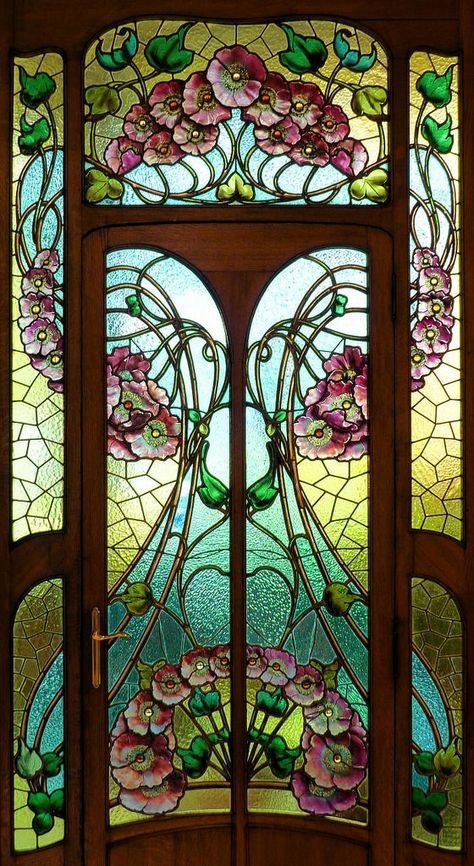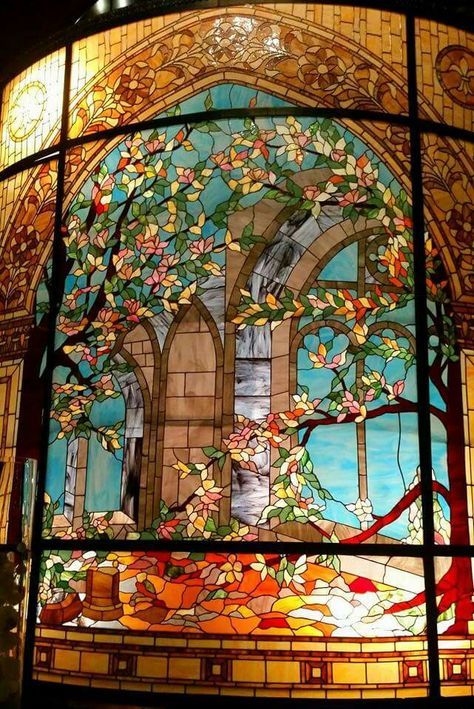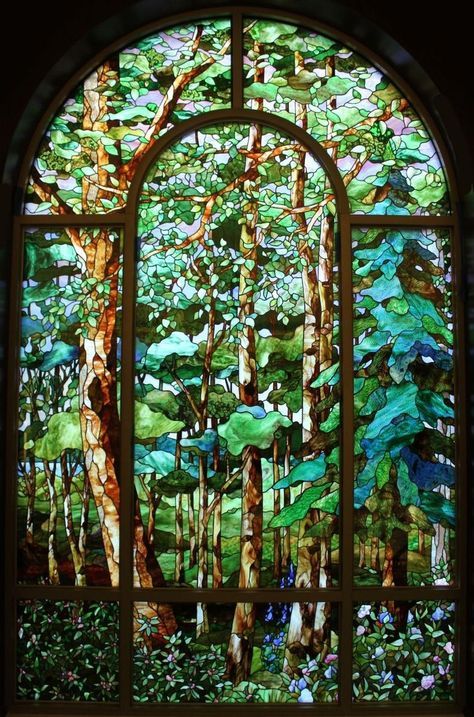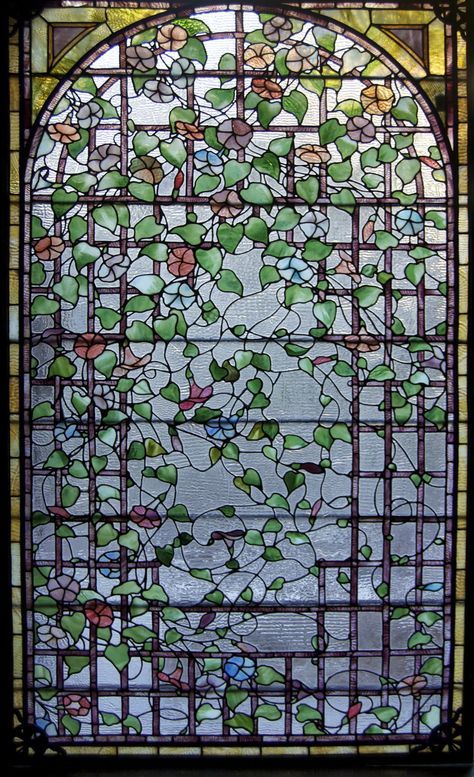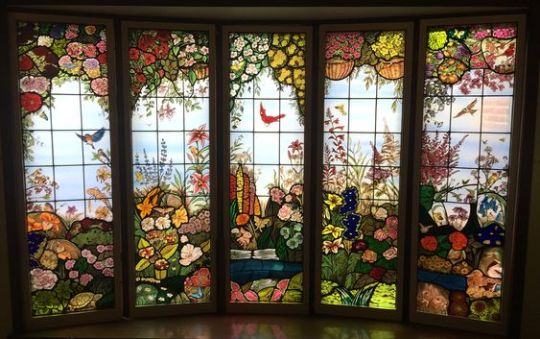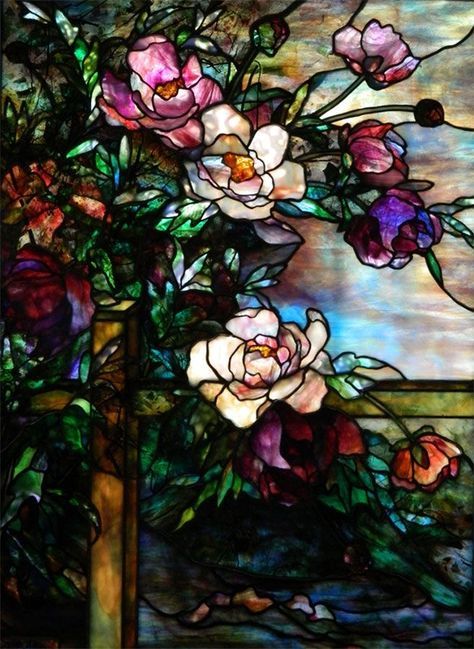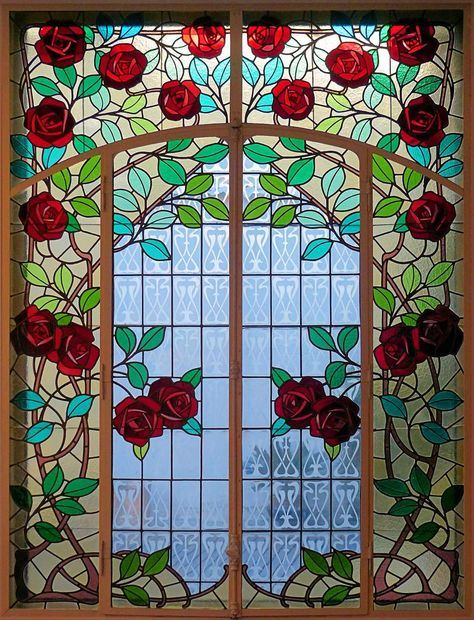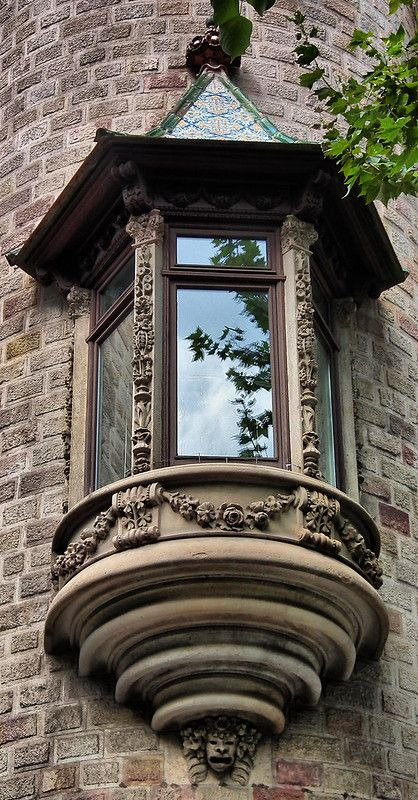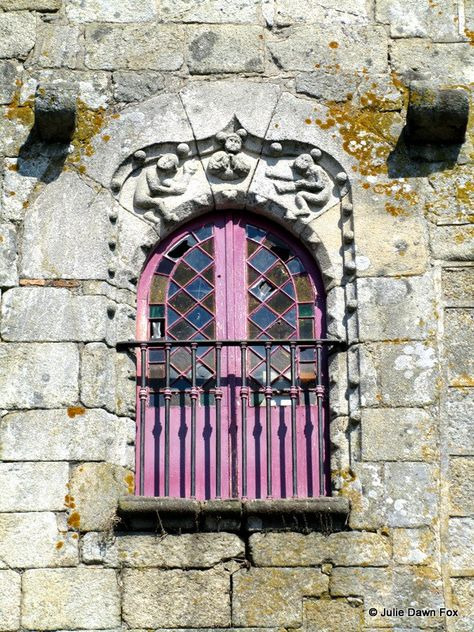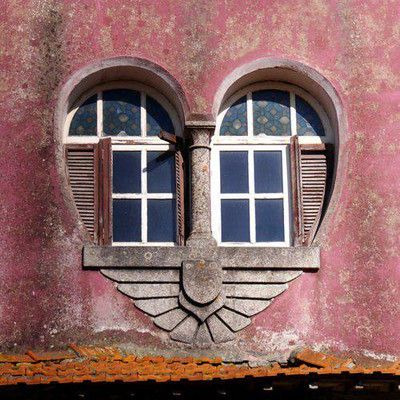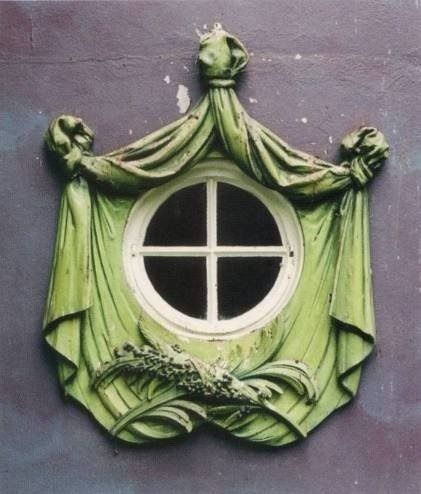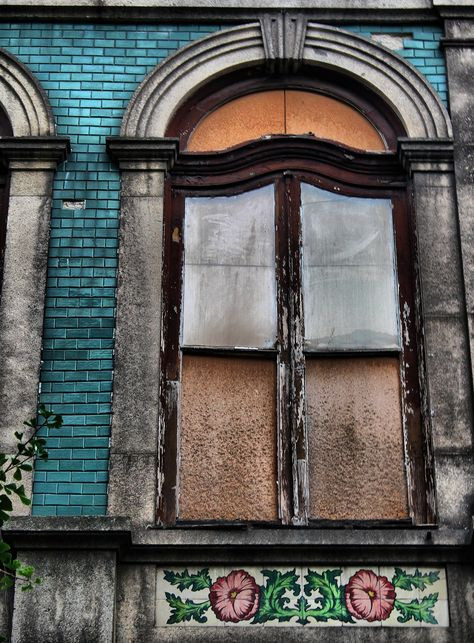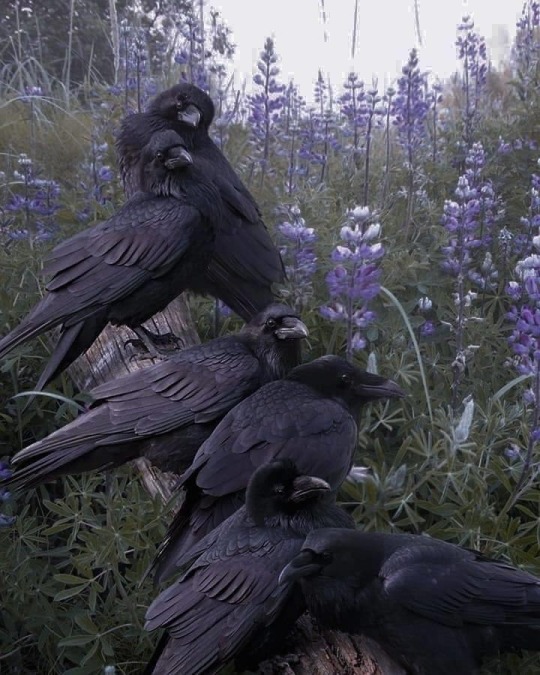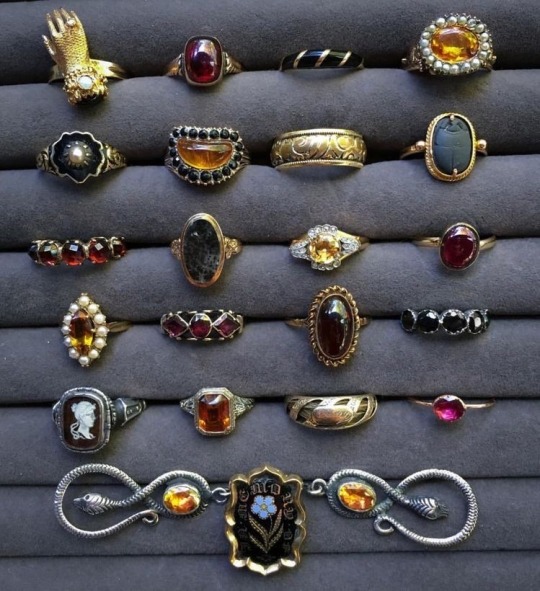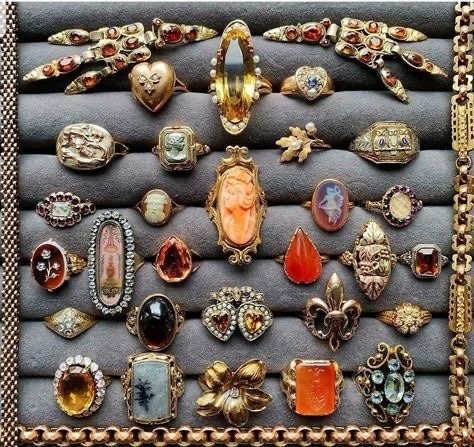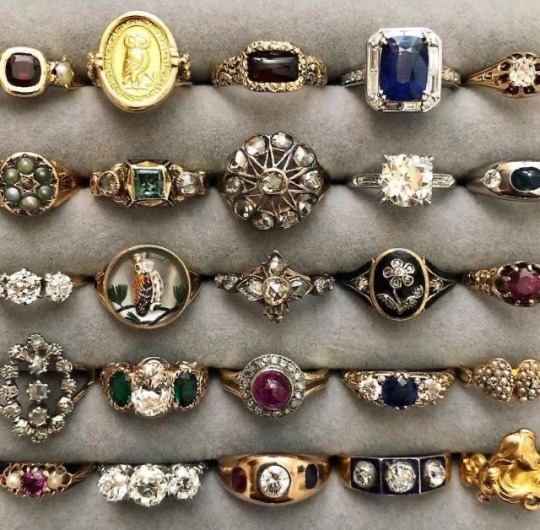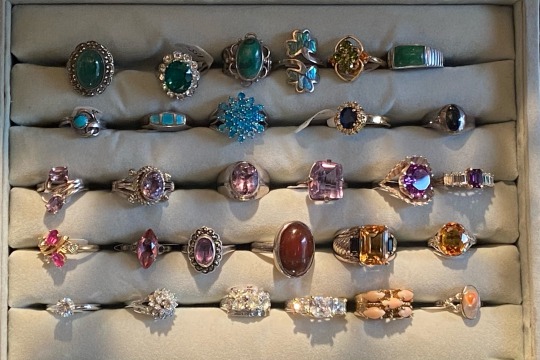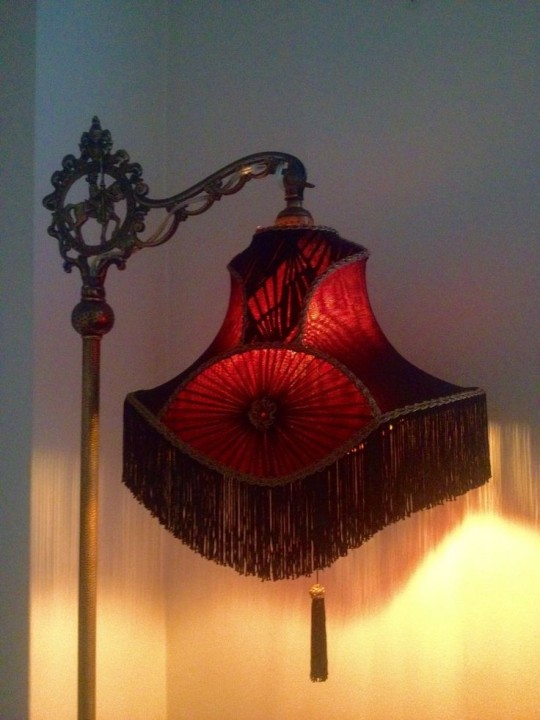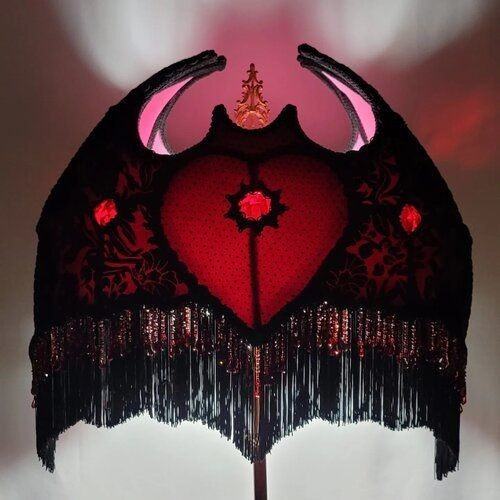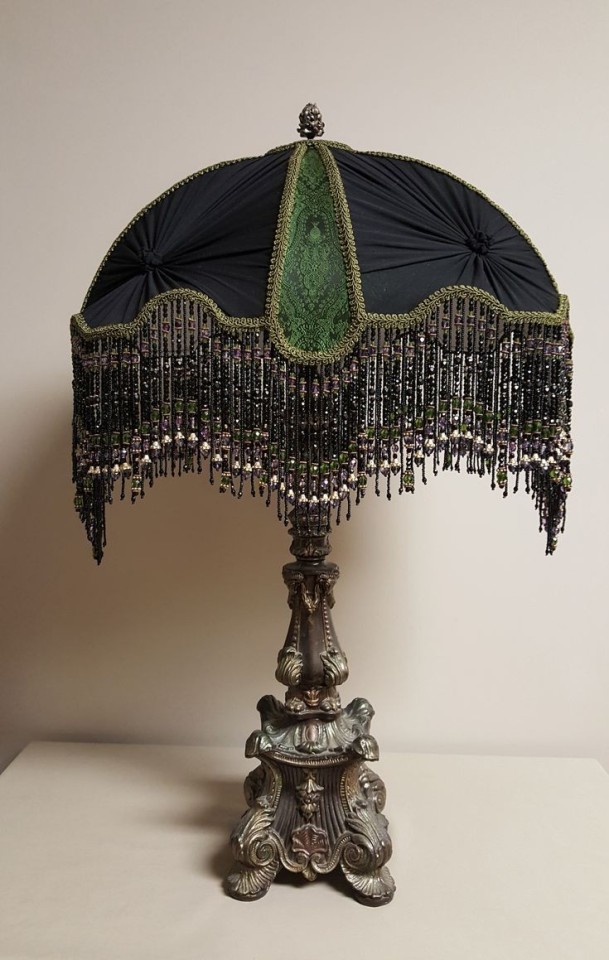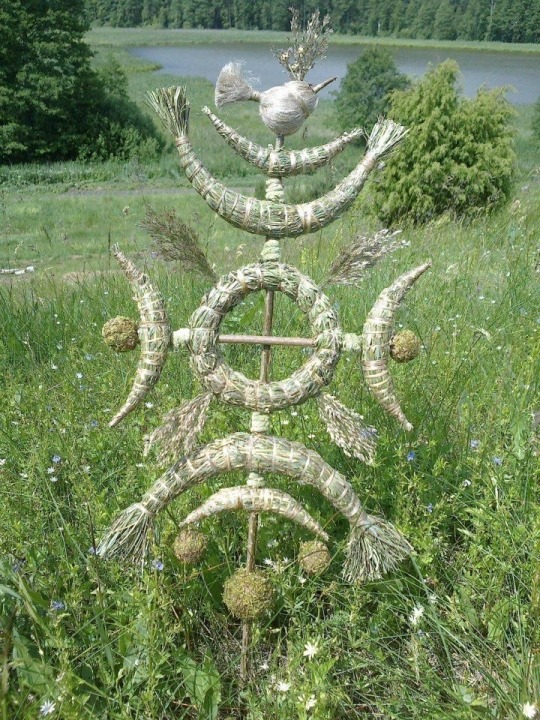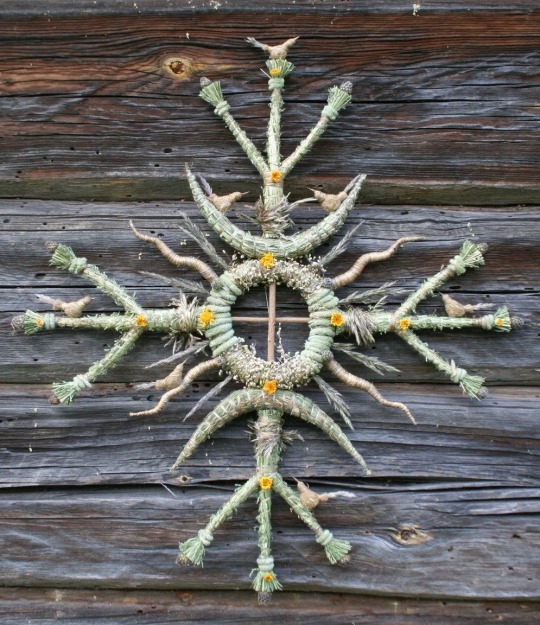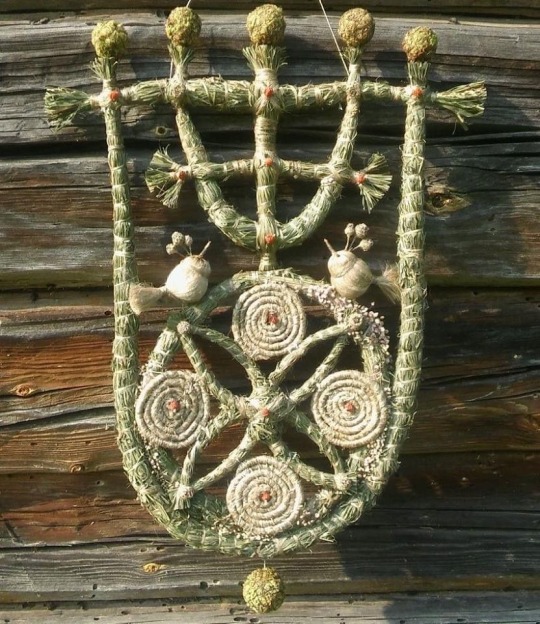25 | Local Monster and Cryptid Enthusiast | Worldbuilder and Writer
Don't wanna be here? Send us removal request.
Text
A Workshop for Creating Magical/ Fictional Crystals: A Guide from a Geologist
Hi folks, its me, here to talk about fictional writing again! Today I'm just tackling the idea of magical stones/mana stones by looking at existing minerals today and some neat properties that they have, and how you can apply these things to a fictional world. The goal is mainly to help you if you are stuck trying to come up with a unique magic system, or a unique identification/characteristic of your mineral.
First Things First: Mineral Shapes

I am exhausted, petered out, down-right fatigued by seeing every mineral depicted with having the crystal structure of calcite and quartz. There are soooooo many cooler, more interesting crystal structures, don't you think you would stop and take a look at a perfect cube in nature? It is completely unsettling.
Second: Color
Color within minerals can either be really important, or not important at all! It is your choice to decide if color is going to be something that means something to your mineral. But what are some times when the color is important? Well.... there are some elements that are called chromophores, this classification just indicates that these elements, when present, will determine the color of whatever they are in. So, if you wanted to treat mana like a chromophore, you could say, "Oh everything that contains mana turns green!" This could mean that regardless of the mineral, if that mineral is a specific color, it means it contains mana. This concept is exciting because you can just stop here and use minerals that already exist! You can also use it as an indicator for a magical ore! Chromophores are typically metals, so if you are making a new metal weapon, making the ore of that metal a unique color would make a lot of sense!
However, your mineral can also just be every color of the rainbow like quartz and perhaps that's what makes identifying your mana stones elusive and create an illusion of scarcity that your character can solve.

There are other things that can change the colors of minerals, like radiation damage, and electron exchange, but I think that is beyond what would be helpful! So lets talk about some unique color properties that happen in nature that seem magical in the first place! Maybe you don't need to design a mana stone, but you want a unique gemstone that only the royal family passes down or something (IDK).
The first one is the alexandrite effect! This is where a mineral can change color in natural light vs. incandescent light. (the mineral itself is not changing, but the lights contain different amounts of different colors that then get absorbed by the stone). Even if you don't use electricity in your fictional world, you could have the colors change in the presence of light magic. This could create fun misunderstandings about what the mineral is reacting to!
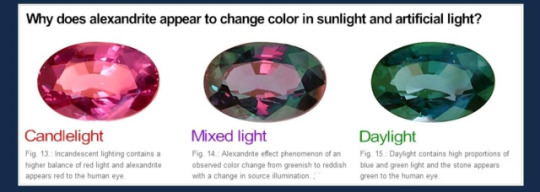
Pleochroism
Pleochroism is something that most minerals have, it is frequently used to help identify minerals in thin sections, however minerals are usually not pleochroic enough for it to be visible to the naked eye! Pleochroism is just a fancy name to describe the change in how light is absorbed based on the angle of the mineral! So if you scroll up to the first image where I showed a lot of crystal shapes, most of them have angles where they are longer and shorter! This will effect the way light travels in the crystal. Tanzanite is a popular mineral that does this.

Photochromism
This is when a mineral will change color (in a reversible way) when exposed to UV light (or sunlight), I am not going to go too into the details of why this is happening because it would require me to read some research papers and I just don't feel like it. The mineral that is best known for this is Hackmanite!
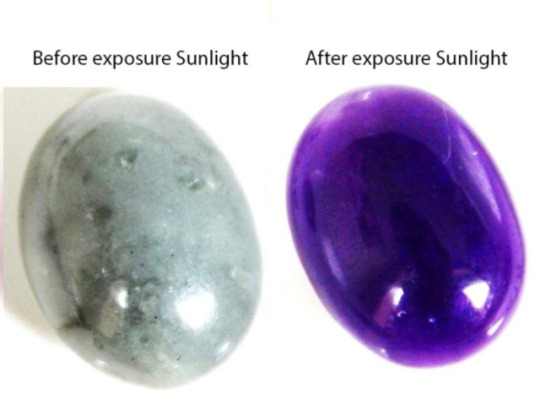
Alright! These are all the really cool color effects that might inspire you or maybe not, but now I am going to talk about how you might find your minerals within a rock!
When I see a lot of magical caves/mines, typically I see them with some variation of a geode honestly, but most minerals are not found like that! Now I am sure most of you guys have seen a geode, so I will not really talk about those, but I will talk briefly about porphyroblasts which is when the mineral grows larger than the minerals around it, this happens in metamorphic minerals!

sorry random stranger, but this is an image of garnets inside a finer-grained rock at gore mountain in New York!
Another way you might find minerals is in a pegmatite! This is when all minerals are really large! This is a formed from really slow crystalizing magma!
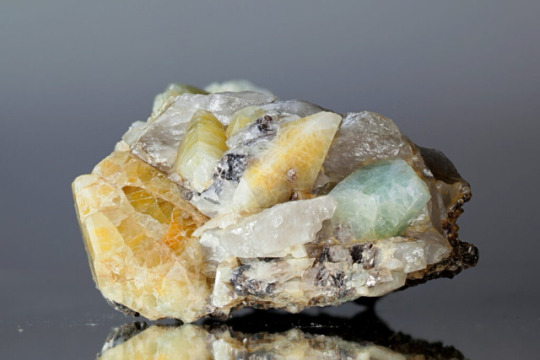
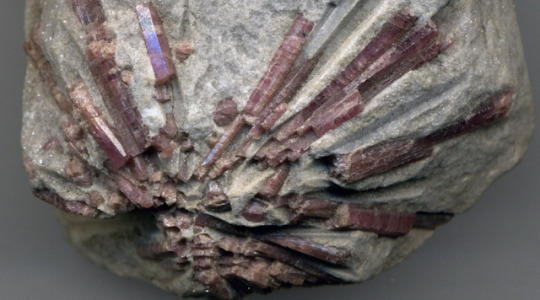
But something else to think about is that your mineral might just be massive, it doesn't have to have distinct crystals, it may be similar to jadeite where small grains grow together which leaves it looking smooth and seamless! A note about all of these is that you would have to mine into the rock to find these, there would not be any natural caves in these rocks! Caves are only ever really formed in limestones and maybe marbles (rocks that react with acid).
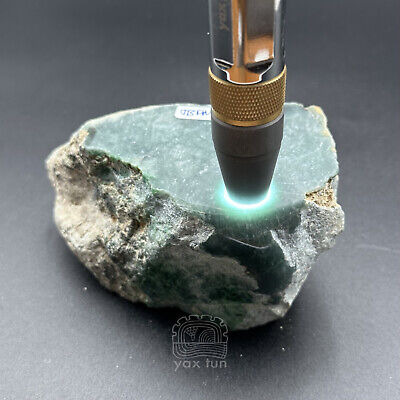
How can your characters identify these minerals?
Typically when you are out in the field you will look to see what type of rocks the minerals are found in (The overall texture of the rock will tell you how it formed). If you know how the rock formed, it will narrow down the amount of minerals you need to think about by quite a bit! Next, you are going to look closely at it and observe its crystal structure, does it have an obvious crystal? if so what is the general shape? If it is broken, how did it break? Did it fracture like glass or did it break along uniform planes. Some minerals have a thing called cleavage (breaks along planes of weakness). If a mineral exhibits this habit, it will again help narrow this down. Next we can look at color. Color can be misleading, because minerals like quartz can be any color imaginable, but minerals like olivine will always be green! The next thing your character can do is test for hardness, minerals all have a specific hardness that can help identify it as well.
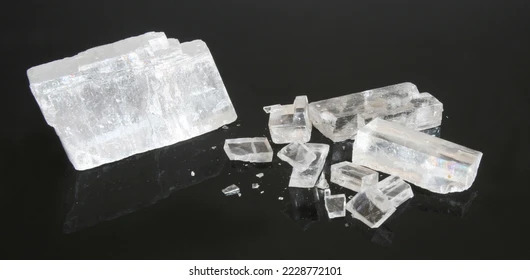
After you go through all of this, your mineral might have some special property! This could be magnetism, fluorescence, reactions to acid, or any of the color changing effects I mentioned above! Other than that, your character can take it back to a lab and do a number of things to identify it, but the most typical thing would be for them to make a thin section (very thin piece of the rock) and observe it under a cross polarized microscope!

On that note folks! I hope this helped in some way in thinking of new magic mineral properties! I have other guides that explore some different fictional worldbuilding issues you might run into, but if you have any topics you would like me to cover please that I haven't mentioned already, let me know!
6K notes
·
View notes
Note
Ohhh my gosh, thank you for your post about geologic events and tips on writing them! If you don't mind, can I ask you about cave systems? Some of the more commons types (mineral types and formations) vs some of the more spectacular/rare finds and the conditions for their formation?
Hello and thanks! Caves typically are formed out of limestone (a sedimentary rock). Limestone is a rock mostly made of calcite/ calcium carbonate that is formed in the ocean. Once the ocean level lowers or the land rises due to mountain building events, these rocks get exposed to the surface where rain (which is usually always a little bit acidic) will begin to react with the stone (Similar to your teeth and soda). Once this process begins it will make the caves we know and love.
There are a couple interesting things that can happen though! First, dissolving rocks means that the water is full of minerals, that means that while that water drips from the caves it will precipitate out those minerals creating stalactites and stalagmites on the ceilings and floors. This also means that they will be made out mostly pure calcite!
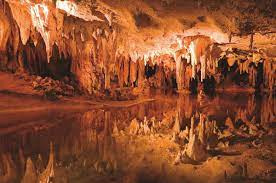
Another interesting thing is that because they were on the ocean floor, it means that there will be a lot of fossils present from an ancient ocean.
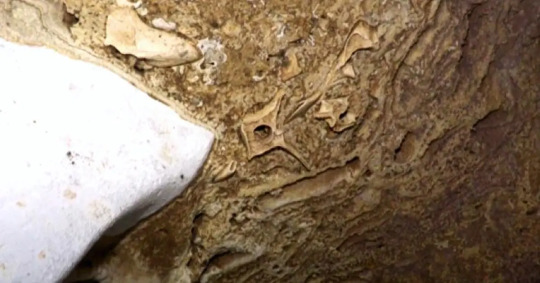
So, most times, the only things you will find in caves is calcite and fossils. However in some rare instances you can have salt caves, which are also sedimentary but would be associated with the drying of oceans (You would also be able to probably find gypsum in those caves as well).
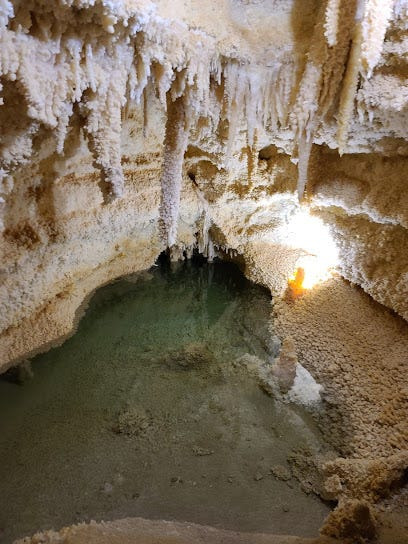
Other rare and interesting caves could be formed from hydrothermal water (hot water generated from volcanic activities), this opens up a world of different things that *could* be present including metals being deposited in the stone (gold, silver, or copper). That said, this is just me inventing excuses for if you want it to be mineable.
Some natural disasters associated with cave systems being under the land would definitely be sinkholes! There can also be entire rivers that just disappear underground.
I truly hope this helps! If someone who knows more about caves sees this, please feel free to add comments!
26 notes
·
View notes
Text
Writing about Mines in your Fictional Universe: A Geology Introduction
Hello! I'm Bird, and I am here to guide you on a journey about different mines that exist, what materials are being mined, what those materials might be mined for, and what rocks/what processes might make these areas mineable. I will also touch briefly on the idea of gem quality, the commonness of the material, and what these things might look like fresh out of the dirt!
First things first, lets talk about the what types of things we might want to mine for in a fictional universe! There are a lot of things that are used daily that require mining, but there are a few that I see written about the most: Gold, Gemstones, Iron, and Coal. I personally would love to see this idea expanded on a bit, so lets talk about some mines that would definitely be necessary but overlooked! First one is pretty easy, glass! those beautiful stained glass windows are useless if no one is mining quartz to be made to glass, and I imagine it would be quite a profitable business seeing as glass, in general, was a luxury in ye olden times. The next thing we need to address is Abrasives! want to sand and polish stone and metal? Want to sharpen your blades for battle? May I introduce you to abrasive minerals! garnet, corundum (Ruby and Sapphire), and yes, diamond! Why are we using such beautiful gemstones to polish other things? Simple, even if you are to find a deposit of these gemstones (garnet being one of the more common ones) most of the time they are inclusion rich, ridiculously small, an undesirable color, or all three of these.
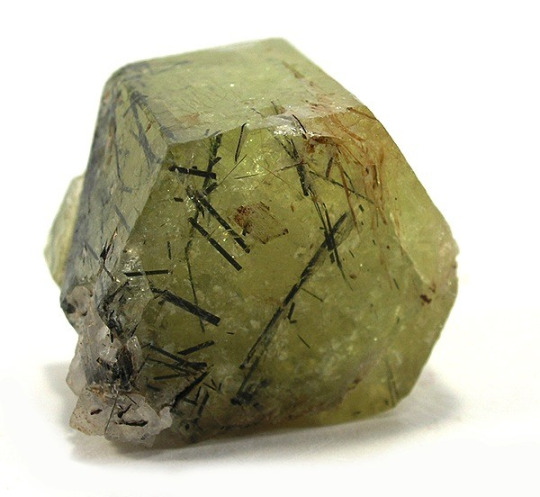
Finding gemstones that are good quality is hard, your character will not stumble upon it, pick up the rock and immediately know if the location is good enough to mine gemstones. If you are determined to make it a gemstone mine, have your character hold the mineral up to the sun/a light source and let them be able to see light coming through, though it is considerably thick.
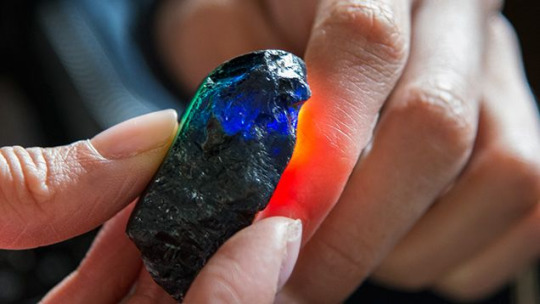
Moving into metal mining! Metal mining is both easier and more complicated to write! Why is it complicated? Because unless it is gold or silver you are unlikely to see the desired metal itself. Why is it easy? welllll, I am going to try to make it easy. First things first, a lot of metals are chromaphores, this means that when the element is present, it will influence the color! Copper is an excellent example of this, old pennies oxidize and turn blue/teal/green, so do most rocks bearing copper! Looking for iron? It will probably stain the rocks dingy and brownish red. Things to note: copper and iron can be found in mineable amounts together! If you do this, iron will be present in the form of pyrite, or fool's gold, this has a nice cubic shape and can be described as such, the copper will typically leave a teal residue or veining across the rock, which in this case will almost exclusively be black to dark gray (Its basalt) but it can be found as the mineral chalcopyrite also (looks like fool's gold but it doesn't make cute crystals). Malachite is also a copper ore, in my experience I have never seen malachite from a mine that has looked like some of the stuff I have seen in gem shops, azurite (A darker blue mineral) can be present also, but again, these are usually very fine grained and would not be able to be used as jewelry, but obviously, in some places it must happen, just much less frequently.
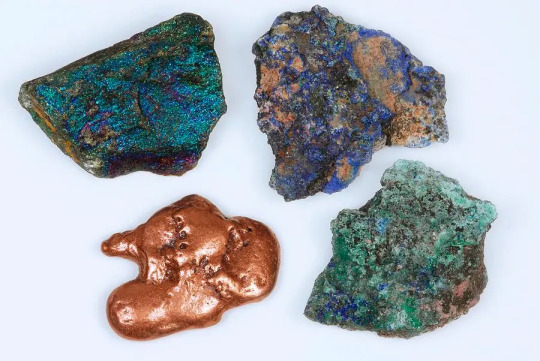
Another thing I will briefly mention is that, if you are writing about metals remember that these metals will require a smelting process to extract a pure metal, this usually requires some other material (For iron, it is charcoal). Also remember alloys! Most useable metals are a mix of different metals to make them harder. This even includes gold jewelry. Last comment about metals, a very interesting plot for a fictional universe would be the use of lead. Lead ore was a hot commodity before we knew it was toxic, the side effects (Being nuts) could really create some tension.
Lastly in terms of mined material, I will briefly mention coal and stone in general just to say, coal is a sedimentary rock, distinctly different from the typical environments necessary to form most gemstones and heavy metal deposits (Yes, there are exceptions). Coal is dark black/gray, which is quite uncommon for sedimentary rocks which tend to range from reds/tans/browns/grays. When coal is lifted it will feel much lighter than you anticipate, which is the polar opposite of what happens when you lift a metal rich rock, which will feel immensely heavy. Finally, Coal will not turn into diamonds in nature, diamonds need mantle pressures and temperatures to form, there will be no diamonds under a coal mine unless there was a mantle derived eruption that got covered in a swamp, that became coal and as they dug they exposed the kimberlite pipe (I mention this because I just read this in a story and it hurt my feelings). Finally, If you want to write about a mine that is definitely necessary but want the content to be pretty low-maintenance, but profitable for whoever owns it, owning a granite/marble/ or really any desirable stone quarry would be perfect.
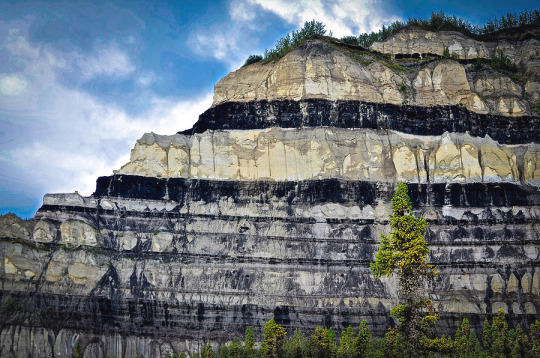
Now I will move onto what kind of mining exists today, I will not talk about every exclusive mine, but I will talk about ones that are common that are on my radar. First up, the one everyone talks about in books, underground mining. Underground mining is used when you are getting the material from the 'primary'/original source. The rock is rich in copper? Lets mine said rock. However, mining underground is the most dangerous form of mining, there can easily be a lack of oxygen because of insufficient ventilation (That's why people will carry something with an open flame when going into abandoned mines; if the flame goes out there is not enough oxygen and you have to turn back). There can also be lots of collapses due to overhead rocks, enough said. Cave mining is primarily done when the amount of rock above the deposit is too great to strip mine.
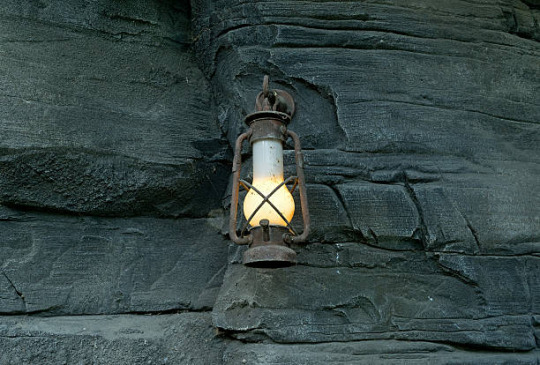
Now lets talk about strip mining! Strip mining is when you just mine on the surface, and dig deeper and deeper into the ground to obtain your desired resource whether it be stone, coal, gemstones, or anything else. It truly is less glamorous, but it is safer than digging a tunnel. That said it has its own issues, sure the oxygen is good, and you don't have to worry about the rocks collapsing over your head, but oh wait, the rocks can collapse over your head. Landslides can occur due to the over steepening of sides, excessive rainfall, and most importantly, old faults or planes of weakness that happen to be facing towards the mine (the diagram will help this make sense). Both of these types of mines can also create ecological damage, which can be mitigated nowadays, but then maybe not so much. Namely acid mine drainage, I will not talk much on the effects but a quick google search will give you plenty of information that might be useful for writing.
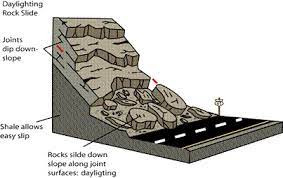
Now both of these are trying to mine a targeted rock, but sometimes its best to let nature do the work so we can do less. Diamonds, gold, corundum (rubies/sapphires), and garnets all have one thing in common. They are dense! So when erosion happens, and that sediment makes its way into a river, everything will separate based on its density. This is just because faster moving water can hold heavier sediments, and slower moving water will drop those heavy sediments leaving only the lighter sediments within the water. Lots of places that mine the things listed above will pan/sieve in active rivers and streams, or they can surface mine where rivers and streams used to be! These are called placer deposits. There is one setback though, the gemstones will not be perfect crystal shaped, they will be rounded due to being thrown around in a river (like beach glass). These are sapphires, but they have been rounded over time in the river.
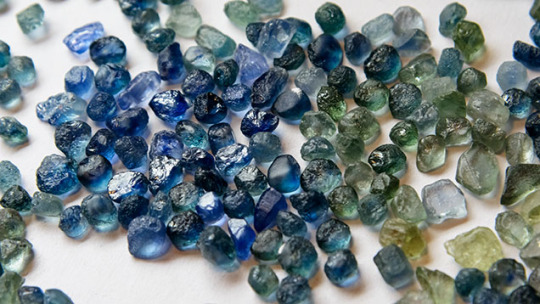
Final thoughts, writing about a mine can seem nerve-racking, intimidating, or just something that you want to briefly mention and move on from, but truly I think going into the weeds could really add something to a story! Even if stories are slightly inaccurate about information, I am still 100x more excited to see it mentioned in more detail than to see it as a sentence. Besides it is fantasy, it doesn't always have to be exactly like earth.
67 notes
·
View notes
Text
Hi! I'm Mothhawk. Also called Soosh, Sooshki, Hokum-
I ramble about worldbuilding here, and may post characters and descriptions on occasion. If you're curious about anything, please feel free to drop me a message!
My worldbuilding project is titled, The Records of the Murin-Ryn.
The Murin-Ryn is the name of this world; In it's entirety. From the farthest star in the heavens, to the lowest, blackest depths of the deepest chasms in the Earth and under the Seas- All is the Murin-Ryn.
Enclosed in this project are records of the existence of this world of curious creatures and characters- And all the flora and fauna, and history and cultures of their many lands. I'm a bit of a writer, I'm a bit of an artist, and I'm a bit of a programmer, but I'm certainly not adept at any of them. Still, I hope you'll find some enjoyment from the things I make and share here.
Short FAQ: How old are you? Pronouns?
My age is in my blog description- And call me by whatever you like, I am who I am.
What's your pfp?
A creature of the Murin-Ryn; Amiculus! He's a little bird, and I love him dearly. He's very silly, and very much a creature.
I'd like to use your art. Can I?
I'd prefer if you did not- I am open to suggestions, and I often doodle for folks if they ask nicely. I don't consider my stuff good enough to take commissions off of, but I am more than happy to doodle an idea or a character if I like the idea, and have the time! (I am terrible with perspective and proportioning things correctly; This becomes evident when I draw from memory or start drawing human bodies). But to answer the question, my art I post here is specific to this project; You are more than free to reblog/share, but please do not repost any of it for anything, unless you get explicit permission from me. If you would like to "use" it for something, please let me know and ask!
AI art?
Absolutely not. Do not use my stuff in data models, training, or anything of the sort. I do not post AI art, and I certainly hope I do not reblog any AI art, either.
0 notes
Text

-The Seal of the Silver God- In the Murin-Ryn, there are two* principle gods, over all the other spirits and lesser deities that exist in the realm.
The Silver God stands aside the Golden God, and both rule the realms and all domains and powers with absolute authority and goodness. Tava-rynius is his name; God of Time, God of Healing; God of Mercy, of Justice, of Judgement, of Order, of Dominion- Of Civilization, of Technology, of Alchemy, of Righteousness. His titles are many, his dominion over Metal and Water- And his messengers, or, if you will, angels, bear the appearance of silvery, white fish, with bright, glowing blue eyes.
They manifest out of the depths of any and every body of water, purifying it as they appear; And even in a puddle, they can descend into depths that are not there to return to the Infinite Sea where the Silver God dwells.
The Silver Fish, as they are called, are often playful, curious creatures- Watching over people from afar, and guiding folks to do good deeds. They congregate around Silver Towers -Special towers that house the power of the Silver God- and the Temples where he is worshiped. But, as it is in the Murin-Ryn, they have not been seen by many in recent times... *Those of the lower lands claim there are two Principle Powers... Those of the Far North remember a Third.
#Worldbuilding#Records of the Murin-Ryn#Silver Fish#Fish#OC#Seal design#creature design#Kind of#The fish are supposed to be very angelic
2 notes
·
View notes
Text

Vectuvius et Lucerna
The Twin Suns of the Murin-Ryn. The Golden one, Vectuvius, is the "eldest" of the suns; The blue one, Lucerna, burns far hotter, and is the younger sun; It also moves faster than Vectuvius does across the sky.
4 notes
·
View notes
Text

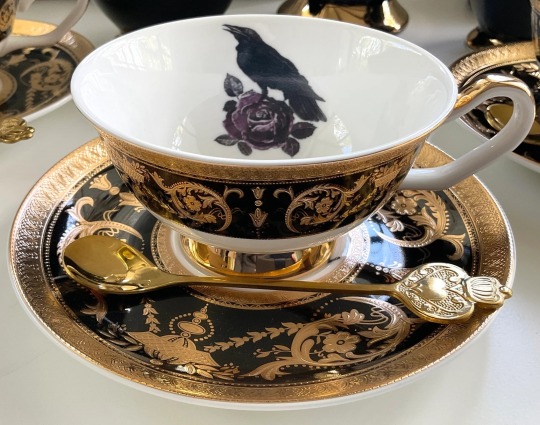
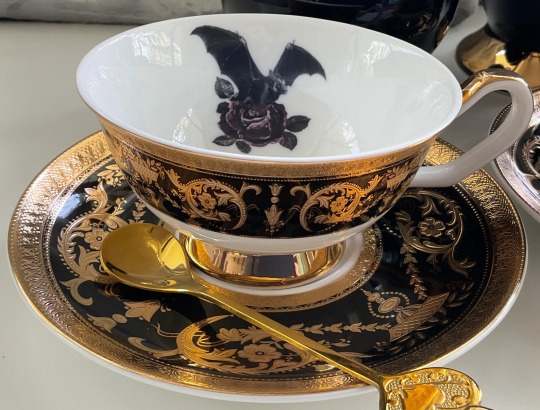
Black Gold Tea Set // Angioletti Designs
17K notes
·
View notes
Photo
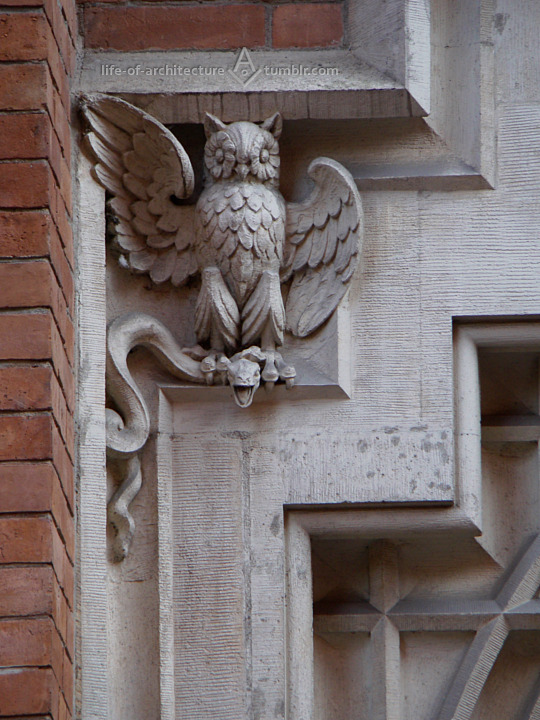
Kraków ul. Gołębia 13 Uniwersytet Jagielloński - Collegium Witkowskiego budynek z lat 1908-1911 architekt: Gabriel Niewiadomski foto z 4 listopada 2017
><><><><><><><><><><><><><><><
Kraków, Poland Jagiellonian University - The Witkowski College built in 1908-1911 archiect: Gabriel Niewiadomski taken on 4 November 2017
287 notes
·
View notes
Text

Novodevichy Cemetery, Moskovsky district, St. Petersburg
(Serpant11)
109 notes
·
View notes

